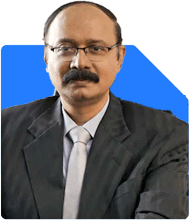Hello Sir - I'm 50 yo - And I have been actively investing in MFs since 2005. Have redeemed several times for several investments / expenditure and I withdrew all my funds last yr due to some useless foreteller who predicted markets are going to fall big time and redeemed all my funds - 35+ Lacs is in FD now for about 18 months. I was investing close to about 35K in MFs MoMonth. Now I want to get into that again. My salary is about 1.5Lacs net . Have a flat & plots in a Metro city, have provided funds for kids higher education / wedding etc, Good amt in PPF & EPF. Please suggest the right SIPs for me to invest towards retirement fund and I have an appetite of 40K monthly for the next 5 yrs (likely retirement).
Ans: 1. Understanding Your Current Situation
At 50 years old, you have accumulated significant assets. Your decision to redeem Rs. 35+ lakhs based on a foreteller's prediction has put you in a conservative position with funds in an FD. While FDs offer safety, they may not provide the growth needed to sustain you through retirement. With retirement planned in 5 years, it’s crucial to optimize your investments.
2. Revisiting Your Financial Goals
Retirement Planning
Your primary goal now should be to build a robust retirement fund. With retirement only 5 years away, you need a balanced approach. Your retirement fund should be able to generate a steady income, and offer protection against inflation. This requires careful planning with a mix of growth and stable investments.
Existing Assets and Liabilities
You have a flat and plots in a metro city, and you’ve secured your children’s future with funds for their education and weddings. Additionally, you have a good amount in PPF and EPF. These are strong foundations, but they need to be supplemented with strategic investments to ensure your retirement is comfortable.
3. Re-Entering the Mutual Fund Space
Equity Mutual Funds
Given your 5-year horizon, equity mutual funds should be part of your strategy. They offer the potential for higher returns. However, the allocation to equities should be moderated, considering your risk profile and time horizon. Work with a Certified Financial Planner to select funds that match your risk tolerance and retirement goals.
Avoid Index Funds
Index funds, while cost-effective, may not be ideal at this stage. They lack the flexibility to adjust to market conditions. Actively managed funds, with a seasoned fund manager, can offer better returns, especially in a volatile market. A certified expert can guide you in choosing funds with a proven track record.
Disadvantages of Direct Funds
Direct funds have lower expense ratios but lack the personalized advice that comes with regular plans. Investing through a Mutual Fund Distributor (MFD) with CFP credentials ensures your investments are aligned with your financial goals. Regular funds provide you with the necessary guidance to navigate market fluctuations.
4. Fixed Deposit vs. Mutual Funds
Reassessing Your Fixed Deposits
The Rs. 35+ lakhs currently in FDs offer safety but at the cost of growth. FDs typically offer returns that barely outpace inflation, eroding purchasing power over time. Consider gradually shifting a portion of these funds into mutual funds. This can help you achieve better growth while maintaining some level of safety.
Debt Mutual Funds
Debt mutual funds can be a suitable alternative for a portion of your FD funds. They offer better tax efficiency and potentially higher returns than FDs. However, it’s important to choose funds with a good credit rating to mitigate risk. A Certified Financial Planner can help identify the right debt funds for your portfolio.
5. Structured SIP Investments
Systematic Investment Plan (SIP)
Starting an SIP of Rs. 40,000 per month is a wise move. SIPs allow you to invest systematically, reducing the risk of market volatility. With a 5-year horizon, consider a mix of equity and debt funds. This balance will provide growth potential while cushioning against market downturns.
Diversification
Diversification is key to reducing risk. Spread your SIPs across different types of funds—large-cap, mid-cap, and balanced funds. This ensures your portfolio isn’t overly reliant on a single asset class. Regular reviews with a Certified Financial Planner will help you stay on track.
6. Insurance and Risk Management
Review Your Insurance Coverage
Given your stage in life, ensure that your insurance coverage is adequate. This includes life insurance and health insurance. If you have any investment-linked insurance policies like ULIPs or LIC policies, consider whether they are still serving your needs. If not, it may be wise to surrender these and reinvest the proceeds in mutual funds.
Health Insurance
With retirement approaching, ensure your health insurance coverage is comprehensive. This will protect your retirement corpus from being eroded by medical expenses. Consider adding critical illness coverage if it’s not already part of your plan.
7. Retirement Corpus Calculation
Estimating Your Retirement Needs
Work with a Certified Financial Planner to estimate the corpus you’ll need to maintain your lifestyle post-retirement. This includes factoring in inflation, healthcare costs, and longevity. Your current savings in PPF, EPF, and real estate, combined with your new investments, should be evaluated to ensure they meet your future needs.
Income Generation Post-Retirement
Plan for a mix of investments that can generate income during retirement. This might include SWPs (Systematic Withdrawal Plans) from mutual funds, which provide a steady income while allowing the remaining corpus to grow.
8. Regular Monitoring and Adjustments
Portfolio Reviews
It’s essential to regularly review your portfolio. Market conditions, personal circumstances, and financial goals can change. Regular reviews with a Certified Financial Planner will help ensure your investments remain aligned with your goals. Adjust your SIPs and other investments as needed.
Rebalancing Your Portfolio
As you approach retirement, gradually reduce exposure to equities and increase allocation to safer debt instruments. This will protect your corpus from market volatility and ensure steady income during retirement.
9. Final Insights
Your decision to re-enter the mutual fund space with a disciplined approach is commendable. Focus on a balanced investment strategy that includes both growth and stability. Regular reviews, proper diversification, and appropriate insurance coverage will ensure you meet your retirement goals. With careful planning, your retirement years can be financially secure and fulfilling.
Best Regards,
K. Ramalingam, MBA, CFP,
Chief Financial Planner,
www.holisticinvestment.in



























